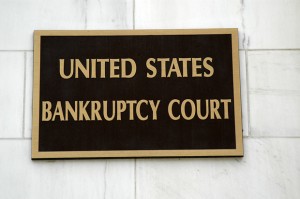 If a debtor is a plaintiff in a personal injury lawsuit at the time they file bankruptcy then the cause of action is an asset that must be listed in the schedules. The asset is protected by exemptions, just like any other asset listed on the schedules. Any portion that cannot be exempted is property of the bankruptcy estate, and the trustee will require that the amount be handed over to the trustee so that the funds can be paid to the unsecured creditors listed in the case.
If a debtor is a plaintiff in a personal injury lawsuit at the time they file bankruptcy then the cause of action is an asset that must be listed in the schedules. The asset is protected by exemptions, just like any other asset listed on the schedules. Any portion that cannot be exempted is property of the bankruptcy estate, and the trustee will require that the amount be handed over to the trustee so that the funds can be paid to the unsecured creditors listed in the case.
Before the lawsuit can be settled either the personal injury attorney or the debtor’s bankruptcy lawyer will have to file a motion seeking permission from the bankruptcy court to settle the lawsuit. The reason for this is that a portion of the asset belongs to the bankruptcy estate, so before any settlement agreement or agreed judgment can dispose of the cause of action, the court must approve of the settlement. The trustee will want an opportunity to review the settlement agreement as well to determine that it is a fair agreement under the circumstances and doesn’t unnecessarily waste funds that should go to the unsecured creditors.
If the debtor is a defendant in a personal injury lawsuit at the time the bankruptcy case is filed then the lawsuit is stayed, which means the plaintiff cannot continue pursuing his claim without the bankruptcy court’s permission. The plaintiff may file a motion to lift the stay in order to pursue the lawsuit if the debtor will not be liable for paying the resulting judgment. For example, the court may lift the stay if the debtor’s insurance will pay the resulting judgment rather than the debtor. If the lawsuit is the result of an automobile accident in which the debtor was driving drunk then the debt will not be discharged. This is one of the exceptions to discharge in the Bankruptcy Code.